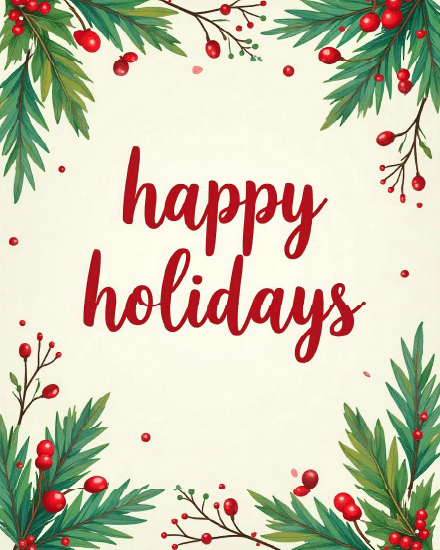Top 20 Most Celebrated Holidays Around the World
Holidays around the world are more than just traditions — they’re celebrations of identity, culture, and connection. From sacred festivals to joyful seasonal events, these special days bring communities together across countries and generations. In this guide, we explore the top 20 most celebrated holidays around the world, diving into their unique traditions, cultural meaning, and how millions honor them in vibrant and heartfelt ways.
1. Christmas

Undoubtedly one of the most celebrated holidays worldwide, Christmas commemorates the birth of Jesus Christ in Christian tradition. Observed on December 25th, it transcends religious boundaries, embraced by people of various faiths and cultures. Festivities typically include decorating Christmas trees, exchanging gifts, attending religious services, and enjoying festive meals with loved ones. In the United States, Christmas holds particular significance, marked by iconic traditions like Santa Claus, caroling, and elaborate light displays.
2. Chinese New Year

Also known as Lunar New Year or Spring Festival, Chinese New Year is a major cultural event across East Asia. Celebrated between January 21 and February 20, the holiday features lantern festivals, red envelopes for luck, dragon dances, and family feasts. It’s a time to honor ancestors, sweep away bad luck, and welcome prosperity.
3. Diwali

The Hindu Festival of Lights symbolizes the triumph of light over darkness and good over evil. Diwali is celebrated with glowing oil lamps, firecrackers, sweets, and gifts. Homes are decorated with rangoli and vibrant lights, and prayers are offered to deities like Lakshmi for wealth and wisdom. It's one of the brightest holidays in the world.
4. Thanksgiving

Primarily observed in the United States and Canada, Thanksgiving is a secular holiday that encourages gratitude for life's blessings. Traditions include a turkey feast, family gatherings, football games, and parades. It’s a celebration of abundance, family, and thankfulness.
5. Easter

Easter commemorates the resurrection of Jesus Christ and is celebrated with church services, egg hunts, and family meals. The holiday symbolizes rebirth and new beginnings. Customs vary worldwide, from chocolate bunnies in the US to elaborate processions in Europe.
6. Halloween

Halloween, originating from ancient Celtic festivals, has evolved into a widely celebrated holiday known for its spooky and festive atmosphere. Observed on October 31st, it involves dressing up in costumes, trick-or-treating, carving pumpkins into jack-o'-lanterns, and attending themed parties and events. While particularly popular in the United States, Halloween's influence has spread to various parts of the world, captivating people of all ages.
7. Hanukkah

Hanukkah, also known as the Festival of Lights, is a significant Jewish holiday commemorating the rededication of the Second Temple in Jerusalem. Celebrated for eight days and nights, usually in December, it symbolizes the miracle of a small quantity of oil lasting for eight days, as recounted in Jewish scripture. Observances include lighting the menorah, playing dreidel games, indulging in traditional foods like latkes and sufganiyot (jelly-filled donuts), and exchanging gifts. Hanukkah holds deep cultural and religious significance for Jewish communities worldwide, fostering a sense of resilience, faith, and unity.
8. New Year's Eve
New Year's Eve marks the transition from the old year to the new, celebrated with fervor and anticipation across the globe. From fireworks displays illuminating city skylines to lively parties and gatherings, it's a time for reflection, resolutions, and joyous revelry. Different cultures have unique customs to welcome the new year, whether it's eating twelve grapes at midnight in Spain for good luck or watching the ball drop in New York City's Times Square. Regardless of the traditions, New Year's Eve is a time of optimism and celebration, symbolizing hope for the future
9. Independence Day
Independence Day commemorates the liberation and sovereignty of nations, typically from colonial rule or foreign occupation. Celebrated with patriotic fervor, it often includes flag ceremonies, military parades, concerts, fireworks displays, and speeches honoring national heroes and historic achievements. Examples include the Fourth of July in the United States, Bastille Day in France, and India's Independence Day. These occasions serve as reminders of resilience, freedom, and the enduring spirit of nations throughout history.
10. Oktoberfest
Oktoberfest, originating in Munich, Germany, is the world's largest beer festival, attracting millions of visitors from around the globe. Held annually from late September to the first weekend in October, it celebrates Bavarian culture, cuisine, and, most notably, beer. Festivities include traditional music, folk dances, parades, carnival rides, and, of course, vast quantities of beer served in massive tents. Oktoberfest embodies conviviality, camaraderie, and the joy of shared cultural traditions, transcending borders to unite beer enthusiasts worldwide.
11. Mardi Gras

Mardi Gras, or "Fat Tuesday," is a lively celebration observed in many parts of the world as the final day of festivity before the start of Lent. Nowhere is it more iconic than in New Orleans, where the streets explode with color, music, and parades. People dress in elaborate costumes, toss beads and trinkets, and indulge in rich Creole cuisine.
Even if you're celebrating from afar, you can still join the fun with friends or colleagues. Learn how to create a group eCard for Mardi Gras and send festive messages that capture the joy and spirit of the occasion.
12. St. Patrick's Day

St. Patrick’s Day honors the patron saint of Ireland and celebrates Irish culture and heritage with full festive flair. Observed on March 17, the day is filled with parades, green outfits, live music, and traditional dishes like corned beef and cabbage. From Dublin to Chicago, the celebrations are loud, proud, and full of heart.
Whether you're Irish by blood or simply Irish at heart, it’s a time for togetherness, laughter, and honoring shared traditions. If you're looking to join the fun from afar or send a festive message, explore St. Patrick’s Day cards that feel like a toast — perfect for raising spirits and sharing a virtual cheer.
13. Valentine's Day

Valentine's Day, celebrated on February 14th, is a day dedicated to love, romance, and affection. While its origins are rooted in Christian and Roman traditions, it has evolved into a secular holiday celebrated worldwide. Couples exchange gifts, flowers, and heartfelt messages, while restaurants and retailers offer special promotions and events. Valentine's Day is a time to express love and appreciation for partners, friends, and family, fostering connections and spreading joy through acts of kindness and affection.
14. Holi

Holi, also known as the Festival of Colors, is a Hindu spring festival celebrated primarily in India and Nepal but also observed in other parts of the world with Indian diaspora. The festival signifies the victory of good over evil and the arrival of spring, marked by vibrant street celebrations where participants throw colored powders and water at each other. Holi is a time for joy, unity, and forgiveness, as people come together to revel in the spirit of camaraderie and renewal.
15. Vesak
Vesak, also known as Buddha Purnima, commemorates the birth, enlightenment, and death of Gautama Buddha, the founder of Buddhism. Celebrated predominantly by Buddhists around the world, Vesak is a time for reflection, meditation, and acts of kindness. Observances vary by region but often include visiting temples, chanting sutras, giving alms to the poor, and lighting lanterns. Vesak serves as a reminder of the Buddha's teachings of compassion, wisdom, and the path to enlightenment.
16. Navaratri
Navaratri, meaning "nine nights," is a Hindu festival dedicated to the worship of the goddess Durga and her various manifestations. Celebrated with fervor across India and among Hindu communities worldwide, Navaratri features elaborate rituals, colorful decorations, and energetic dance performances, such as Garba and Dandiya Raas. Each of the nine nights is dedicated to a different form of the goddess, symbolizing the triumph of good over evil. Navaratri is a time for spiritual renewal, devotion, and celebration of feminine power and divinity.
17. Mid-Autumn Festival

The Mid-Autumn Festival, also known as the Mooncake Festival, is a traditional Chinese holiday celebrating the harvest season and the full moon. Observed on the 15th day of the eighth lunar month, it is marked by family gatherings, outdoor activities, and the sharing of mooncakes, a symbolic pastry filled with sweet fillings. Lanterns are lit, dragon dances are performed, and folklore tales are told to celebrate the beauty of the moon and express gratitude for abundance and prosperity.
18. Kwanzaa

Kwanzaa is a week-long celebration honoring African heritage and culture, observed from December 26 to January 1 across the United States and other African diaspora communities. Established in 1966 by Dr. Maulana Karenga, the holiday centers on the seven principles of Nguzo Saba, including unity, self-determination, and creativity.
Families light the Kinara, share in traditional meals like the Karamu feast, and reflect on values that promote cultural pride and community strength. For those unable to gather in person, sending warm wishes through Kwanzaa eCards: meaningful digital greetings is a thoughtful way to celebrate and stay connected during the season.
19. Ramadan

Ramadan is the ninth month of the Islamic lunar calendar and is observed by Muslims worldwide as a month of fasting, prayer, reflection, and community. Lasting for 29 or 30 days, depending on the sighting of the moon, Ramadan commemorates the revelation of the Quran to Prophet Muhammad. Muslims fast from dawn until sunset, abstaining from food, drink, smoking, and marital relations, while also engaging in increased prayer, Quran recitation, and acts of charity. Ramadan concludes with Eid al-Fitr, a joyous celebration marking the end of fasting and the beginning of Shawwal, the tenth month of the Islamic lunar calendar.
20. Vaisakhi
Vaisakhi, also known as Baisakhi, is a vibrant and deeply meaningful harvest festival celebrated in India, particularly in the northern state of Punjab, and by Sikh and Punjabi communities around the world. Held every year on April 13 or 14, Vaisakhi marks the Punjabi New Year and commemorates the founding of the Khalsa by Guru Gobind Singh in 1699 — a pivotal moment in Sikh history.
For farmers, Vaisakhi is a time to rejoice in the bounty of the spring harvest. The day begins with processions known as Nagar Kirtans, where Sikh devotees sing hymns and perform martial arts (Gatka) in the streets. Gurdwaras (Sikh temples) are beautifully decorated and serve langar (community meals) to all, reinforcing Sikh values of equality and service.
Families wear traditional attire, perform Bhangra and Gidda dances, and gather for feasts that reflect joy, gratitude, and community spirit. Today, Vaisakhi is celebrated not just in India but across the UK, Canada, the US, and other countries with large Sikh populations.
Vaisakhi beautifully blends spirituality, cultural identity, and agricultural roots — a true example of a holiday that unites people in faith, joy, and shared tradition.
Frequently Asked Questions
1. What is the top 10 most celebrated holiday in the world?
According to cultural significance and global participation, the top 10 include Christmas, New Year’s Eve, Chinese New Year, Diwali, Eid al-Fitr, Easter, Halloween, Thanksgiving, Hanukkah, and Valentine’s Day. These holidays are highlighted throughout this guide, each with its own unique traditions and global reach. Many are also celebrated with digital gestures like group greeting cards, helping people stay connected worldwide.
2. Which country has the most public holidays in the world?
Countries like India, Thailand, and Colombia are known for having the highest number of public holidays, largely due to cultural and religious diversity. In this article, you’ll find multiple Indian festivals like Diwali, Holi, Navaratri, and Vaisakhi, all of which are deeply rooted in Indian traditions.
3. Where is the longest holiday season in the world?
The Philippines holds the record for the longest Christmas season, beginning as early as September. Similarly, Ramadan, Chinese New Year, and Navaratri span several days or even weeks depending on local customs. Our list includes holidays like Ramadan Kareem and Christmas that are celebrated for extended periods across different cultures.
4. What is the world’s oldest holiday still celebrated today?
Several holidays in the list have ancient roots. For example, Diwali, featured in this guide, dates back thousands of years in Hindu scriptures. Similarly, Easter and Hanukkah are based on long-standing religious events. These festivals continue to be honored today with traditional observances and modern expressions like group eCards that bring communities together.
5. What is the second biggest holiday after Christmas?
Chinese New Year is often considered the second most celebrated holiday in the world, particularly in East Asia. Our article highlights its lantern festivals, dragon dances, and multi-day celebrations. You can also explore special function group cards to send greetings during this important occasion.
Conclusion
In conclusion, these holidays represent a diverse array of cultural, religious, and secular traditions observed around the world. Whether marking religious milestones, seasonal transitions, or historical events, they foster a sense of unity, community, and shared heritage among people across the globe. While rankings may vary based on cultural context and individual preferences, these festivities collectively enrich the human experience, embodying the universal values of joy, gratitude, and celebration.
Try Free Greeting Cards
Recent Articles
Halloween eCards for the Office That Aren’t Cringe
Holiday Cards for Remote Teams Made Simple
25 Group eCard Prompts for Any Occasion
Celebrate Mid-Autumn Festival with Beautiful eCards: A Modern Take on a Timeless Tradition
Diwali eCards for Global Teams
How to Create Holiday Card Campaigns for Large Teams
Office Group Cards for Halloween Fun: How to Make Halloween at Work Unforgettable
The Most Underrated Occasions to Send Group Cards
Saying Thanks With Graduation eCards: A Heartfelt Guide to Expressing Your Gratitude











